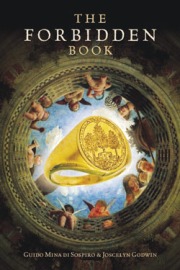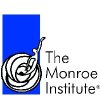A Philosophical Rejoinder to Religion’s Radical Intolerance of Science, Reason, and Morality: Reading “UFOs, Intolerance, and Beliefs: When Religion and Politics Should be Topics at the Dinner Table”
(UFO Magazine, Vol. 24 No.1, Issue #154)
“Authoritarian Church thought has condemned independent philosophy on the ground that it is a worldly temptation which leads man away from God, destroys his soul with vain preoccupations” ~ Karl Jaspers
In the article, “UFOs, Intolerance, and Beliefs: When Religion and Politics Should be Topics at the Dinner Table” authors (Drs) Bob and Zoh Hieronimus document Peter Robbins’ quest to examine fundamental Christianity’s disturbing, and what was for him, surprising intolerance to the scientific pursuit of the investigation of UFOs, i.e., a radical intolerance of methods which “attempt at a scientific or historical analysis of this undeniable phenomenon.” Deeply troubled by Evangelist Pat Robertson’s outrageous and immoral proclamation that those who actively pursue the phenomenon of UFOs from a scientific perspective should be stoned to death, Robbins began interviewing fundamental Christians, polling their opinions and compiling a dossier of their views on UFOs in relation to their religious world-view. In the process, Robbins undertakes a ‘philosophical’ and ethical inquiry into self-knowledge, specifically with respect to what he terms “intense feelings of intolerance toward the intolerant.” Robbins, seeking to understand the authentic democratic notions of equity, justice, and equality in the arena of open critical debate as related to UFO studies, is an inspiration to all who cherish the ideals of inclusive, respectful debate, which holds the potential for disagreement among participants without the threat of violence.
However, Robbins grants a sense of charity and ‘tolerance’ toward the fundamental Christian religious view that is, in my estimation, far beyond the bounds of rational and moral civility; it is also, as I demonstrate, beyond the limits of what philosophy terms ‘friendly’ religious-philosophical debate. Absolutism and dogmatism in all of its virulent forms must be confronted, and if necessary, combated and suppressed, especially when there is the potential of serious harm coming to others. Fundamentalist Christian views, as expressed by Robertson, threaten the authentic ‘democratic’ ways that ensure, as Robbins rightly points out, that we might “live together in harmony and ultimately begin to respect the differences that we have.” As a ‘narrow atheist,’ one who denies the existence of the theistic God of Christianity, many issues and concerns that the article brings to light are of interest to me as they relate to the ongoing debate between theology and philosophy of which I am an active participant as a concerned secular thinker. In what follows, I’ll revisit several of the concerns that the article raises with the purpose of attempting to draw out their philosophical implications.
To begin, philosopher and sociologist Jurgen Habermas, writing on the topic of critical, inclusive discourse, outlines a democratic notion of ‘communicative’ ethics that not only structures the processes of dialogic problem solving, it also embodies the virtues, or ideals, of justice, equity, and equality through the unfolding of its critical and respectful discourse. When we gather together with the purpose of redirecting our failed courses of action, i.e., when our claims to knowledge or solutions to ethical problems break down, there is a need to reevaluate our actions, conscious mind-sets, and the knowledge and practices that we are currently adopting. What is unique about Habermas’ conception of authentic discourse is that it literally prefigures, within the participatory nature of its structure and unfolding, the future ideals that we are in the process of envisioning and forming, which are not yet immediately present to our social practices. Authentic discourse, as envisioned by Habermas, is all-inclusive, non-coercive, and ecumenical in nature, based not on the participants’ social position, but on the legitimacy of the arguments that participants bring to the debate.
In short, all people are given an equal voice, yet all voices do not carry equal weight, for arguments grounded in rational principles of ‘sound’ argumentation are clearly more valuable than others in solving our problems, which is why Habermas states that within authentic ethical discourse it is “the force of the argument prevails.” Fundamentalist religious belief excludes itself from the forum of rational discourse as described and endorsed by Habermas, and clearly should be excluded, from such ‘ethical’ considerations because of its propensity to ignore facts and cling dogmatically to positions anchored in faith and the literal interpretation of scripture. Their ‘faith’ precludes the consideration of any and all perspectives outside of their own, their minds are already made up, and no amount of rational discourse will change things. As Robbins points out, “If you don’t take their belief to heart, then at best you’re completely misled, and at worst you’re part of the problem and also leading folks down the wrong path.” Not only will fundamentalist Christians refuse to engage in the type of ‘ethical’ debate I have outlined above, if they oppose your position, they will, as Robertson claims, consider the horrifying possibility of stoning you to death. In the desperate and misguided attempt to play God, enacting His divine will of earth, they assume the roles of Holy judge, jury, and executioner, meting out punishment in a manner they believe is sanctioned by both God and scripture. It is interesting to note that the fundamentalists’ literal interpretation of scripture ignores such passages as the following:
- Judge not, that ye be not judged. For with what judgment ye judge, ye shall be judged: and with what measure ye mete, it shall be measured to you again. And why beholdest thou the mote that is in thy brother’s eye, but considerest not the beam that is in thine own eye? (Matthew 7:1-3)
We should adopt a ‘zero tolerance’ policy with respect to fundamental Christians such as Robertson who advocate for violence as a solution to enact a ‘totalizing’ effect, through which a religious world-view is constructed where differences are either leveled down, i.e., the unsaved are converted, brought to the light of soteria, or eliminated outright. The only Christians we should agree to debate, or indeed can debate, are those whose beliefs are not wholly derived from faith, miracle, or revelation, those whose religious beliefs allow for the possibility that our rational capacity for responding to philosophical-theological problems, while necessary, is limited and that we cannot have any type of knowledge with definitive certainty. If such conditions obtain, the potential exists for philosophical debate within an atmosphere that fosters respectful disagreement among the participants. However, it must be noted that in order for the discourse to hold an adequate degree of immediacy, the person holding the Christian position, or theistic view, must espouse a reflective and informed position. As philosopher William Rowe outlines, this position is represented by Christians “who [are] aware of the usual grounds for belief and disbelief and [are] acquainted to some degree with modern science.” For example, a Christian might rationally justify their belief by appealing to the ‘theistic’ arguments for God’s existence, as found in Aquinas, or by examining and analyzing their own experience of God and religion.
Philosophy embracing ‘friendly atheism’ acknowledges that it is certainly possible to be rational and speak logically about one’s belief system without being expected to categorically validate it, i.e., providing necessary and sufficient reasons that are beyond question or revision. For example, Christian philosopher William Lane Craig is one such thinker who provides rational and philosophical grounds for his beliefs. Craig has written extensively on the Kalam Cosmological Argument for God’s existence, and with intelligence, rigor and great decorum, has debated Richard Dawkins. According to Rowe, ‘friendly atheism’ does not advocate tolerance across the board, or what might be termed ‘unconditional tolerance,’ to include those holding outrageous and unsubstantiated religious views, such as fundamentalist Christians, whose beliefs are akin to what humans “believed in the eleventh or thirteenth century.” There is a point at which even the ‘friendly atheist’ must refuse to grant an invitation to discourse, and the type of religious belief to which fundamentalists cling, which defies anything resembling a reflective and informed position, must be excluded from the context of rational philosophical debate on religion.
The marked difference between Robbins and the fundamentalists he seeks to understand might be expressed in the following terms, as related to a fallacy of logic known as the Appeal to Ignorance, which manifests in two distinct forms: Religious thinkers often fall victim to the first form of the argument when attempting to articulate their position; Atheists often fall victim to the second form of the argument when attempting to ground their position. The Appeal to Ignorance works in such a way that a lack of evidence is marshaled in defense of one’s claims. In short, because I am unable to prove something doesn’t exist, you are therefore free, and beyond, fully justified in believing that it does exist. In it’s theistic manifestation, it can be articulated in the following terms: Nobody (science-physics) has shown definitively that God does not exist; Therefore, God exists. In the second version of the argument, which is often mistakenly employed by atheists who believe that it justifies their position in a categorical fashion, the burden of proof is placed on the Christian, and it runs as follows: Nobody (religion-science-physics) has shown definitively that God exists; Therefore, he does not exist. Robbins explicitly avoids falling into the trap of this latter version of the Appeal to Ignorance, and he demonstrates this when he contemplates the possibility of the fundamentalists’ claim that UFOs are in fact minions of Satan, and in what follows, Robbins even goes so far as to consider he (extreme) possibility that fundamentalists might indeed be correct. The quote is worth reproducing in its entirety:
- How can anyone truly know – know, with absolute certainty – that this is the one and only explanations for UFOs? Hey, what do I know? I’ve only been studying this subject for thirty plus years. Perhaps I’m wrong and truly anomalous UFOs are demonic in origin, their crafts manned by the minions of Satan, as Robertson and those who share his beliefs maintain.
This leads into the consideration of the so-called ‘demonic hypothesis’ for UFOs, and unlike Robbins, I refuse to grant any credence to this outrageous, mythological fueled nonsense; I am utterly intolerant of such jejune explanations for phenomena that clearly hold advanced scientific-technological implications. With the ‘demon hypothesis,’ an infantile attempt to explain UFOs, fundamental Christians make Mother Goose appear as a bastion of truth and reason. The hypothesis in short centers around the origin of UFOs, which only appear as if they are from outer space, only appear to be inter-dimensional, for they are actually crafts piloted by demons under the command of Lucifer with the sole purpose to lure people away from the teachings of Jesus, from God and His Word, the Bible. Empirical evidence for UFOs is, not surprisingly, utterly discarded, and further, denounced as the blasphemous ratings of the secular scientific community. As the authors state, when the fundamentalists were interviewed by Robbins all the “radar tracking cases or other physical evidence left behind to support the off-world hypothesis,” were explained away by linking all the empirical evidence to the dastardly shenanigans of Satan. As Robbins discovered, and this is a serious issue that I will discuss below: If various anomalous phenomena do not fit neatly within the literal boundaries of scripture, they are relegated to the realm of Satanic activity.
The aforementioned explanation for UFOs in terms of Satan’s demonic legion of ‘Hell’s angels’ given by the fundamentalists when attempting to reconcile anomalous phenomena with scripture, is simply one more example of what Christians have been doing for centuries, namely, rationalizing their proposed solutions to problems which cannot be addressed by simply tending to Biblical exegesis. In light of what has been mentioned, consider the seemingly irreconcilable problem of evidential evil, which perhaps receives its most celebrated treatment in Hume’s Dialogues Concerning Natural Religion. Stated succinctly, the problem hinges on the notion of a theistic God who is in possession of all-perfections (including existence): Omni-benevolence; Omni-morality, Omnipotence, Omniscience, etc, and the undeniable existence of evil, in the form of human and natural varieties. Hume wondered: How is it possible for God, who is possession of all perfections (Hume really focuses on omnipotence and omnimorality), to allow evil to exist in the world, which manifests in the form of seemingly senseless instances of profuse human and animal suffering? What kind of god is the God of Christianity? In response to these monumentally troubling queries, Hume concluded that God is either (1) not All-powerful, in that he might want to intervene in order to stop the suffering, but simply is incapable due to a lack of power; or (2) not All-moral, in that if he had the power to prevent evil from occurring and refuses to intervene, he cannot be conceived as moral. From this, Hume ultimately concludes that the God of theism, the God of fundamentalist Christianity, does not exist.
Christians have offered a variety of explanations that seek to accomplish the reconciliation of worldly evil with God’s All-perfect nature, and this practice is referred to as theodicy, literally from theos (god) and dike (justice). Although many Christians look to the book of Job as offering the paradigmatic solution to the problem of evil, other and more ‘philosophically’ driven solutions have been proposed, which far better serve the Christian’s purpose. For example, one such solution comes from the Christian philosopher John Hick, which he refers to as ‘soul-making’ theodicy. Hick’s argument is actually a powerful work of Christian apologetics, and it espouses the absolutely horrifying notion that we require a ‘toughening up’ of the soul, which means that God must subject us to pain, misery, and profuse suffering on a frequent and repeated basis in order to assure that our souls develop and evolve. Here is an example of Christians not only attempting to understand God’s reasons for doing the things He does, which appear utterly beyond the limited grasp of the finite human mind and oft times remain ambiguous in scripture, but as well, making excuses for God by contriving solutions to lingering and disturbing problems stemming from the incongruity between God’s Holy nature and the heinous acts He commits.
The argument in its succinct form runs thusly: God’s providence is not a form of all-encompassing determinism, for He does not want automatons or puppets as subjects, rather He desires ‘free children of God,’ who come to Him out of a sense of love and through the exercise of free will. Herein lies the tragic double bind at the heart of Christianity: Because we have free will, the power to deliberate and choose without coercion or threat, we oft times fall into error, we sin and do evil things. With this explanation for ‘moral’ evil (humans perpetrating evil on each other), it is not God who is culpable for evil, but rather it is the human being who is responsible for shouldering the burden of evil. The world, as argued by Hick, with all of its evil occurrences is in fact perfect the way it is, perfect in the way God envisioned and created it: Perfect in that it is conducive to producing and sustaining substantial amounts of ‘evil’ all of which work to strengthen the human’s capacity and capability for behaving morally toward others. Evil, it is argued, instills in us a sense of ‘moral urgency’ that we would not otherwise have. Thus, without evil and suffering the possibility would not exist for courageous acts, compassionate gestures, or virtuous heroics.
It seems to me that it is completely unnecessary for God to require such monumental instances of evil to instill a sense of compassion and fellow feeling in the world. Imagining someone enduring a prolonged toothache is enough to arouse a deep sense of empathy for that person in pain, and in a compassionate gesture, offer to help in any way possible. As one philosopher stated: “Even small amounts of evil would allow that. It is not necessary to destroy innocent lives.” However, there is more to the argument than simply engendering our moral capacities and capabilities, Hick also makes clear that God, in addition to creating a sense of ‘moral urgency’, also wants to keep us humble, assure against our excessive pride getting the best of us by deflating our egos and putting us in our rightful place by constantly reminding us that we are vulnerable, fragile, and severely limited. It is amazing that Hick is still able to work the notion of love, as agape, into this frighteningly disturbing and highly immoral picture he paints of God’s universe in response to ‘evidential evil.’ In response to Hick, I say, as did Dostoevsky through the character of Ivan Karamazov, if God requires the death or suffering of even one innocent to carry out His grand design, then far “too high a price is asked for harmony,” and to Him, I return my ticket for admission.
In conclusion, I return to Robertson’s troubling remark that began these reflections in order to consider what seems a paradoxical and intractable relationship between religion and morality, and this concern relates to tolerance and intolerance within open discourse as we pursue solutions to our most difficult problems. To reiterate, it is impossible to come to a civil and ethical agreement with fundamentalists like Robertson, who would be quick to stone people to death of he opposed their worldview. Nietzsche observed that although we are unwilling to die for the opinions we hold, we would perhaps be prepared to die “for the right to have our opinions and to change them.” Nietzsche’s observation presupposes that there are those who seek to silence and extinguish the opinions of others, by any means necessary, throwing the authentic democratic ideals of decency, morality, justice, and equity to the wind, if those positions don’t mesh with their own. The authors remind us of the violent and immoral actions that are born of and condoned by Christianity and its authoritarian, absolutist readings of scripture. If it is not present to scripture, it therefore must be “evil because any pursuit of the same will distract you from further study of the accepted Word.” This precise sentiment is echoed in John Caputo’s reading of Derrida and the ‘messianic’ aspects of deconstruction when he argues that religion becomes truly dangerous when it mistakenly conflates, through a sense of confusion, its faith with knowledge, which, as Caputo writes,
- results in the dangerous and absolutizing triumphalism of religion, which spills blood. Religion is most dangerous when it conceives itself as a higher knowledge granted a chosen few, a chosen people of God: that is a formula for war.
This privileging of divine knowledge in the possession of a select few, justifies persecutions of all types, and the authors include Robbins example of the massacre of Native Americans by European Conquers, who ministered for the conversion of these people, and when this failed, sought to starve them out of the colonized territories or slaughter them outright. Here is but one powerful example of Christianity’s utter perversion of ‘morality,’ which, as faith-based and deontological in nature, leaves no room for ethical inquiry and debate because God’s moral code (Divine Command Theory) is in the hands of dogmatic authorities who ‘interpret’ the law and are radically intolerant of opposing views, both religious and secular. Christianity (although it is not alone, here) is a religion steeped in the blood of innocents, and within his philosophical writings, Bertrand Russell has powerfully exposed Christianity’s vile underbelly, its tendency toward and “readiness for persecution.” Religion, in Russell’s view, is in large part responsible for profuse and intense worldly suffering, for inciting and perpetuating ‘evil’ in the world, which conversely it claims to want to eradicate. Christianity, we might say along with Russell, is grounded in the paranoid fear of the unknown and continues to represent the “source of untold misery to the human race.” Thus, in attempting to briefly provide philosophical commentary on the issues discussed by the authors, it was my intent to show why I am advocating a radical ‘intolerance’ toward the fundamental Christians’ ‘intolerance,’ for along with their dogmatic, absolutist views, looms the ever-present threat of persecution and violence. Robbins makes this point eloquently, so I’ll conclude with his thoughts:
- They [fundamentalist Christians] leave no room for doubt in their convictions and are not open to any sort of modulation in their thinking. When applied to the sweeping questions we find ourselves facing in UFO studies, this kind of inflexibility can be problematic, but when religious fundamentalist thinking is involved, it has the potential to be positively dangerous.
I am no longer the avid follower of UFO studies that I once was in my early thirties, at which time I read ceaselessly on the topic. I still recall the frightening and exhilarating experience of reading C. D. B. Bryan’s Close Encounters of the Fourth Kind, a book that changed my perspective on all things ‘extraterrestrial’ so drastically that, as Kant once remarked after reading Hume, “I awoke from my dogmatic slumbers.” I still read UFO Magazine regularly and marvel at the depth and complexity of the phenomenon, and hold those who pursue UFO studies in the highest regard. I remain captivated in a state of ‘wonder’ when contemplating such things as visitors from far off galaxies and intelligences far greater than our own, for such things are both question worthy and awe inspiring. In fact, as Karl Jaspers rightly points out, wonder, or thauma in the Greek, is the origin of all things philosophical: “Wonder impels man to seek knowledge. In my wonderment I become aware of my lack of knowledge.” The phenomenon of UFOs and the possibility of extraterrestrial biological entities inhabiting the universe alongside us are issues that are deeply philosophical in nature (metaphysical, epistemological, axiological). They represent the types of quandaries that elude easy answers and defy complete explanations. These issues push hard against the limits of our understanding and drive us to the periphery of the circle of knowledge, the point at which, as Nietzsche once wrote, human knowledge either expands or annihilates itself.
James Magrini teaches Western philosophy and ethics at College of Dupage in Illinois and publishes on philosophy, art, and education in such journals and periodicals as Philosophy Today, Philosophical Writings, Education, Philosophy, and Theory, and American Atheist.

















